Original author:@EdisonHuu
tutor:@CryptoScott_ETH
I. Introduction
In a troubled world, music is the home of the soul. It is an outlet for emotions and a balm for the soul. In the melody of music, we find resonance and touch the depth of emotions that cannot be expressed in words. Music, like the paintbrush of time, adds color to the canvas of life, making ordinary days shine with extraordinary light.
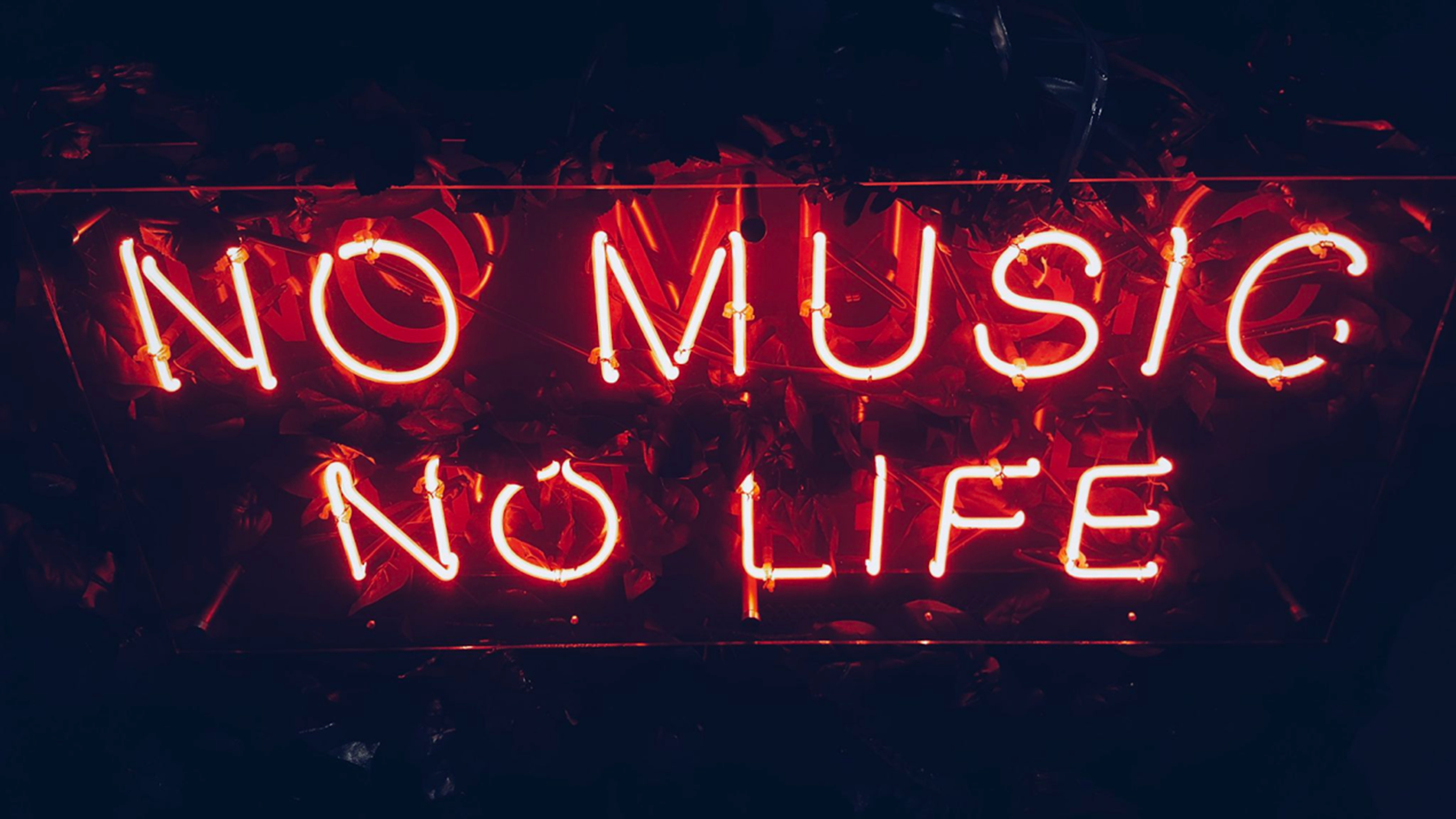
Music is the carrier of emotion, it can arouse our deep emotional resonance, whether it is a joyful song or a sad elegy. A simple melody has the power to evoke deep-seated memories and bring back old smiles or tears. It is the key to our emotional world, opening doors to the depths of our souls.
Music is a social and cultural bond, and music is a bridge that transcends language and cultural barriers. In its unique way, it conveys stories of different cultures and histories and promotes understanding and connection between people. Every note carries cultural heritage, and every rhythm reflects the heartbeat of society. In the resonance of music, we not only discover similarities with each other, but also learn to appreciate those wonderful differences.
Music is the solace of the soul and is our constant companion in the journey of life. It gives us comfort in difficult times and companionship in joyful moments. When we feel lonely or lost, music is that light that illuminates the darkness, giving us strength and hope. It is a haven for the soul, allowing us to find a moment of tranquility in the turbulent life.
Music is the stimulation of creativity, and music is also the source of creative thinking. It inspires our imagination and challenges our ability to innovate. Music is not just a canvas for artists, it is also a catalyst for the inner creativity of scientists, writers, entrepreneurs, and indeed everyone. Inspired by music, we are able to push the boundaries of our thinking and explore infinite possibilities.
In this diverse and complex world, music provides a unique perspective that allows us to feel the beauty and richness of life. It is indispensable because music touches not only our ears, but our souls.
2. Music industry chain
The music industry chain is a large and complex ecosystem. From the flash of inspiration to the birth of a song, from meticulous studio production to global distribution, every step is key to the musical journey. Fundamentally speaking, it is an ecosystem with creation, production, distribution and consumption as its core. In this system, every link is interconnected and interdependent.

Creation and production:
Everything starts with creation, and music creation includes lyrics, composition, arrangement and recording. At this stage, artists and creators are the core. Then comes the production phase, which includes technical processes such as recording, mixing, and mastering. Crucially, this phase determines the final sound quality and style of the musical work.
Release and Distribution:
The distribution link is the process of bringing musical works to the market. Traditionally, this mainly refers to the release of physical records (such as CDs, vinyl) through record labels. However, with the development of digital technology, this link has shifted to digital streaming services and online music stores.
Business model evolution:
In the past, the music industrys business model relied primarily on record sales and live performances. Artists earn money through their record labels, as well as ticket sales from live performances. However, with the growth of digitalization, streaming services have become dominant, changing the way revenue is generated. Today, artists earn more from royalties from streaming services, live performances and brand partnerships.
Copyright management:
Copyright management plays a vital role in the music industry. It is not only related to the income of artists, but also the basis for the fair operation of the entire music ecosystem. Although the digital era has brought broader distribution channels, it has also brought challenges in copyright protection and management.
market trend:
according toIFPIAccording to the 2023 Global Music Industry Report, the global music market has reached US$26.2 billion in 2023, an increase of 9% from 2022. The revenue of the music industry has increased in every region of the world, and the recorded music market has increased by 9% year-on-year. Paid subscriptions The user base reached an astonishing 589 million people. Currently, the music industry is undergoing rapid change. On the one hand, the rise of independent music has broken the market monopoly of traditional record companies; on the other hand, globalization and the popularity of the Internet have allowed music to transcend geographical boundaries and reach global audiences.

Source: IFPI 2023 Global Music Industry Report
3. Industry Pain Points
The music industry, despite continuing to expand and evolve globally, still faces a series of profound challenges and pain points. These problems not only affect the income and creation of artists, but also affect the healthy development of the entire industry.
Copyright issues and revenue distribution:
Copyright issues have always been one of the core pain points in the music industry. As digital music becomes more popular, copyright management becomes more complex.
For example, the copyright dispute between the famous artist Taylor Swift and her former record label highlights the challenges of how artists protect the copyright of their works in the music industry. Additionally, opaque revenue distribution mechanisms leave many artists feeling like they are not being fairly compensated, especially on streaming platforms.
Market monopoly:
Market monopoly is another important issue. The market dominance of large music labels and streaming platforms limits the space for independent artists to develop. This monopoly affects not only artists’ income and exposure opportunities, but also the diversity of music.
For example, independent artists often struggle to gain adequate exposure on mainstream platforms, which limits their career development and creative freedom.
Artist exposure and marketing:
In the digital age, artists face increasing pressure to market and promote themselves. Artists signed to major companies may gain greater market exposure, but independent artists need to figure out how to stand out in a crowded digital world. This is not only a question of resources but also a question of skills and knowledge.
Challenges brought by digitalization:
While digitization has brought wider reach and convenience to music, it has also brought new challenges. Digital piracy and copyright infringement remain a serious problem. At the same time, the popularity of digital music also means that consumers perception of the value of music has changed, which has an impact on music pricing and sales strategies.
Music platforms, as the most important link in the entire music industry chain, are also facing huge challenges.
The complexities of rights management and revenue distribution
From a music platform perspective, copyright management is a huge challenge. There is a need to ensure that all music streamed is legal, while also dealing with the complex distribution of revenue to the relevant rights holders.
Especially for platforms with a large number of independent musicians works, this process is particularly cumbersome and error-prone.
Market monopoly and artist exposure
Large music platforms tend to promote established artists and hit songs, making it difficult for emerging artists and independent musicians to gain exposure.
This market monopoly limits musical diversity and creates barriers to innovation and the growth of emerging artists.
User experience and engagement
Traditional music platforms usually provide limited user participation methods, focusing mainly on music playback and basic interactive functions, lacking in-depth user participation and community building.
4. How Web3 resolves industry pain points
Web3 technology, especially the concept of blockchain and decentralization, provides new perspectives and tools to solve existing problems in the music industry. The essence of Web3 music is to reshape the music industry chain. It uses blockchain technology to make upstream artists works into NFTs and hand them directly to downstream listeners, solving copyright issues and improving revenue distribution. Lets take a look at Web3 Advantages of music.

Make copyright management and revenue mechanisms more transparent
Application of blockchain in copyright management: Using blockchain technology, a transparent and tamper-proof copyright management system can be created. Every use and distribution of a musical work can be recorded on the blockchain, ensuring that artists’ copyrights are protected and properly compensated.
The role of smart contracts in income distribution: Smart contracts can automatically execute complex income distribution agreements. This means that artists and other rights holders can directly obtain income according to preset rules, reducing intermediate links and improving the transparency and efficiency of income.
Break the market monopoly
Decentralized Music Platforms: Decentralized music platforms enable independent artists to release their work directly without going through major record labels or streaming services. This gives independent artists greater exposure while also giving consumers access to a wider selection of music.
Artist Marketing and Exposure
Community-based promotion model: On the Web3 platform, artists can leverage the power of the community to promote their music. Through the tokenized incentive mechanism, fans can directly participate in the promotion and distribution of music, forming a decentralized marketing model.
Addressing digital challenges
NFTs and Digital Assets: By converting musical works or experiences into NFTs, artists can imbue their works with uniqueness and scarcity. Not only could this serve as a new revenue stream, it could also help reshape the value of digital music
5. Target sorting
This chapter sorts out the Web3 music projects currently on the market.
1. Gala Music
Gala Music is a decentralized music platform built using blockchain technology, which allows music artists to enhance their control over music and increase the transparency of the industry chain. Fans can have closer contact and connection with music artists. Gala Music is an important part of the Gala ecosystem. Together with Gala Games and Gala Movies, it forms the cornerstone of the Gala ecosystem. Currently, $Music tokens have been issued with a market value of only $13 million.
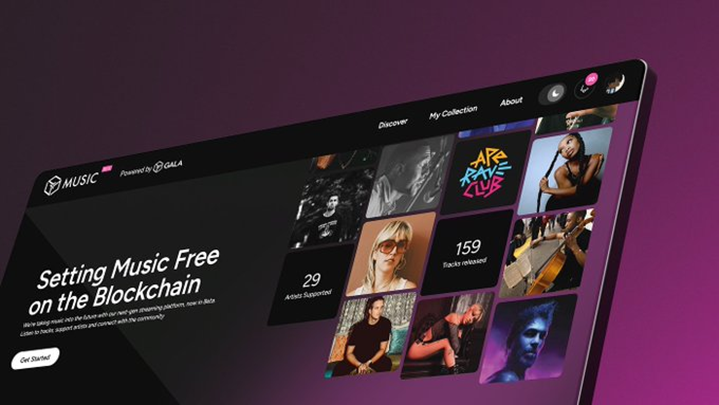
2. Audius
Audius is currently the Web3 music platform with the largest number of users and the highest market value. It creates an open sharing ecosystem for music, all music can be listened to for free, and it opens APIs for third-party products to call music. It has rich music resources and low user threshold. The project released its mainnet and token $AUDIO in October 2020. $AUDIO reached a market value of US$5 billion at the peak of the last bull market, and its current market value is about US$200 million.
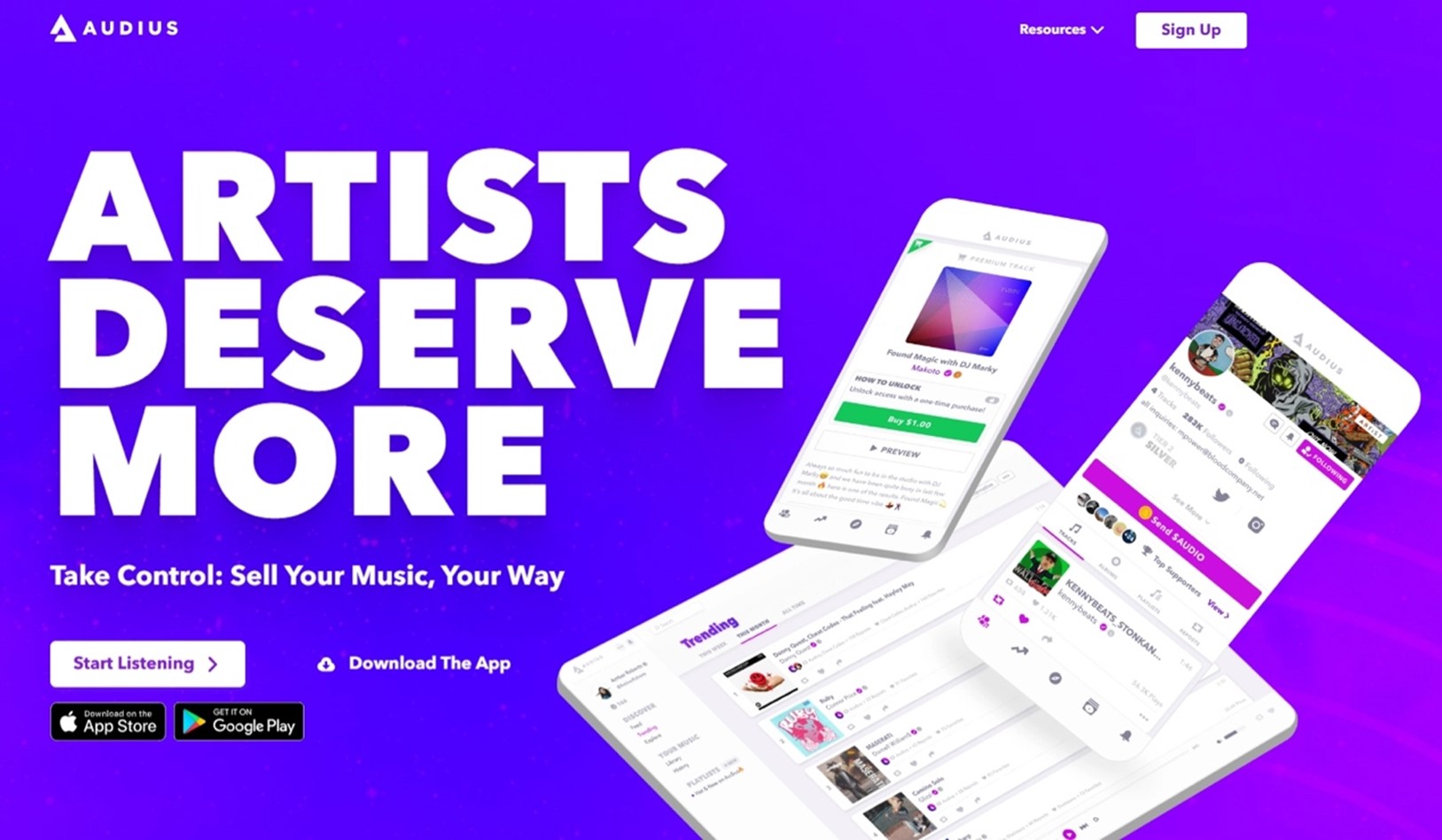
3. Pianity
Pianity is a music NFT platform built on Arweave, aiming to bring together music artists and their communities to create, sell, purchase and collect limited edition songs. Pianity not only treats music as fine art, but also provides artists with services to issue music NFTs, giving artists a new independent source of income. Pianity provides music NFT sales services and auction functions for artists and collectors. The current ecological token is identified as $PIA and has not yet been issued.
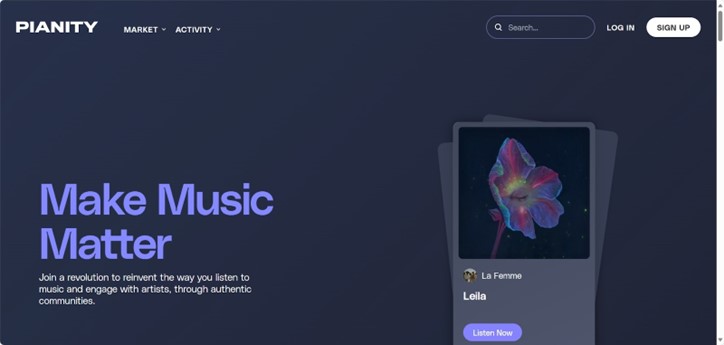
4. Sound.XYZ
Sound.XYZ is an NFT music exploration and streaming platform on the Ethereum chain, which provides a convenient wallet function and NFT transaction path. Currently, the project has received US$20 million in Series A financing, with artists such as Snoop Dogg, DanielAllan, San Holo, Alexander 23 and Vic Mensa participating. No tokens are being issued at this time.
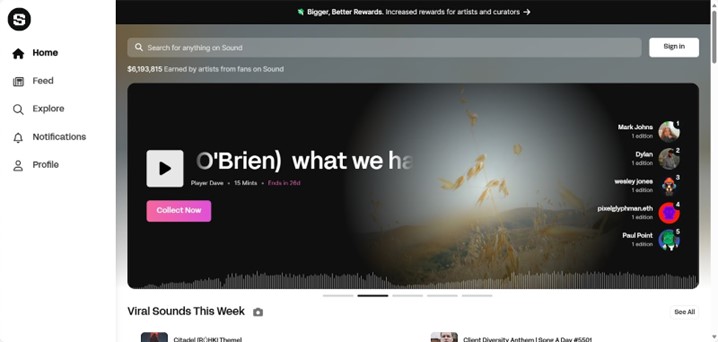
5. Royal
Royal is a groundbreaking music market on the Polygon chain. It aims to allow fans and artists to jointly invest in music and earn royalties, achieving shared ownership and mutual growth. It has received a seed round of 16 million from institutions such as Coinbase and a16z. US dollars, Series A financing of US$55 million, with artists such as 3 LAU, JD Ross, TheChainsmokers, Nas, Kygo and Loqic on board. No tokens are being issued at this time.
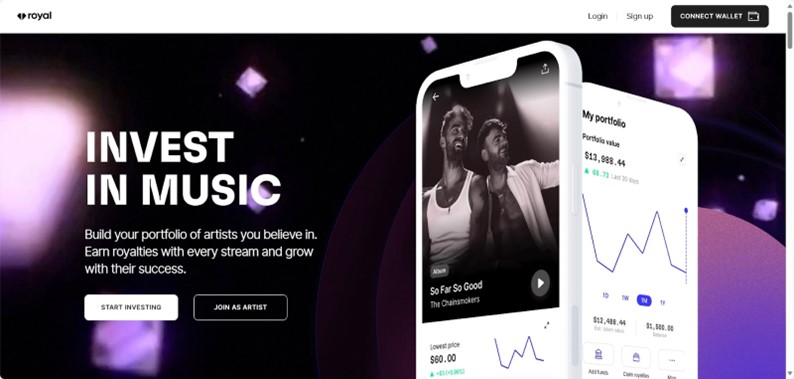
6. Discussion on the development direction of Web3 Music
The application of Web3 technology in the music industry not only solves existing problems, but also brings new development directions to the industry. Below are a few key areas explored, each with specific examples to deepen understanding:
1. Combination of AI Music and Web3
Combining AI music creation technology with the decentralized and transparent features of Web3 can create new music experiences and business models. Music works generated using AI can be copyrighted and traded on the Web3 platform. This combination provides new possibilities for personalization and intelligence of music.
2. The combination of MEME culture and AI music
AI music technology can be combined with popular MEME culture to create highly attractive and communicable music works. This combination can quickly gain popularity among young people and form new music trends. AI can analyze popular online trends and user preferences to generate music works that fit the current cultural context.
3. The combination of DePIN and music
Music data can be kept safe and permanent using decentralized storage solutions. Combined with a decentralized computing platform, AI music model reasoning and processing can be efficiently performed. This combination of technologies helps reduce the operating costs of the music industry while improving the efficiency and security of data processing.
4. The combination of music creator economy and Web3
The Web3 platform can provide music creators with more direct revenue channels and greater market control. Through a decentralized marketplace, artists can sell their work directly to listeners without going through traditional music industry intermediaries. This will encourage more independent creations and promote diversity in the music industry.
5. Combination of NFT and music
NFTs offer a unique way to own and trade music creations. Artists can create limited edition works or exclusive experiences by issuing NFTs of musical works, thereby providing unique collectible value to listeners. In the future, NFTs may become an important way to create and distribute music, especially for independent artists and experimental music projects.
6. The combination of fan economy and Web3
In a Web3 environment, fans can support their favorite musicians by purchasing artist tokens or NFTs. This model not only strengthens the connection between fans and artists, but also provides fans with the opportunity to participate in music creation and promotion, forming an interactive music ecosystem.
7. Conclusion: The future of the music industry and the integration of Web3
Through an in-depth analysis of the music industry chain and its business model, as well as a discussion of the current industry pain points, we can clearly see that the music world is at an important turning point. The introduction of Web3 technology not only provides innovative solutions to existing problems, but also heralds a new direction for the future development of the music industry.

Combining innovation and tradition
The core features of Web3 technology, such as decentralization, transparency, data security and smart contracts, have opened up new paths to solve long-term industry problems such as the complexity of copyright management and unfair income distribution. The application of these technologies can not only improve the overall efficiency of the industry, but also protect the creative rights and interests of artists and ensure that they receive reasonable returns for their labor.
Build a fairer ecosystem
In the Web3 music ecosystem, artists, creators and consumers will enjoy greater power and control. This new ecosystem helps to break the monopoly structure in the traditional industry and create a more diverse and equitable environment for artistic creation and sharing. Artists will be able to connect directly with listeners, and consumers will have more opportunities to directly participate in the music creation and promotion process.
Open a new business model
With the rise of NFT, AI music and decentralized platforms, the business model of the music industry will usher in revolutionary changes. These new models will not only increase revenue streams for artists, but will also provide consumers with unprecedented music experience and participation opportunities. From the collection value of NFT to the innovative potential of AI music, Web3 has injected new vitality into the music industry.
Looking to the future
The future development direction of the music industry must be to adapt to the changes of the times, use intelligent technology to innovate music products and services, improve music quality and efficiency, protect music copyright and income, meet the diverse needs of music consumers, and achieve the sustainability of the music industry develop. Although Web3 Music is still in its early stages of development, its innovative model and solution to the pain points of the traditional music industry are an indispensable path for all music companies that want to gain a foothold in the music industry and continue to develop. When all conditions are perfect, The explosive development of the Web3 music track is foreseeable.
[Statement] This report is produced by@GryphsisAcademystudents@EdisonHuu, in tutor@CryptoScott_ETHOriginal works completed under the guidance of. The authors are solely responsible for all content, which does not necessarily reflect the views of Gryphsis Academy, nor the views of the organization that commissioned the report. Editorial content and decisions are not influenced by readers. Please be aware that the author may own the cryptocurrencies mentioned in this report. This document is for informational purposes only and should not be relied upon for investment decisions. It is strongly recommended that you conduct your own research and consult with an unbiased financial, tax or legal advisor before making any investment decisions. Remember, the past performance of any asset does not guarantee future returns.